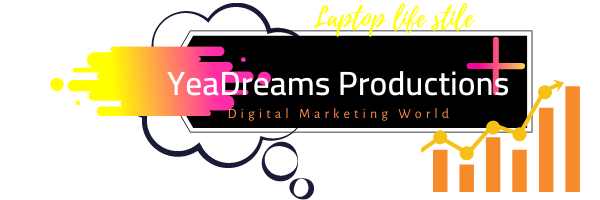Your credit score is a three-digit number that indicates your creditworthiness in a nutshell. It’s not a complete snapshot of your overall financial picture, but lenders look at it when evaluating you for credit cards, loans and mortgages.
But like all things in the financial world, credit scores are nuanced. There are actually multiple versions of your credit score, and they all mean different things to lenders.
For the majority of general lending decisions, such as personal loans and credit cards, lenders use your FICO Score. Your FICO Score is calculated by the data analytics company Fair Isaac Corporation, and it’s based on data from your credit reports. VantageScore, another scoring model, is a well-known alternative.
If you’re planning to apply for a mortgage, be aware that the credit score you see on your application might differ slightly from the one you’re used to. It might even be different than what comes up when you monitor your credit, or even when you apply for a car loan.
Banks use a slightly different credit score model when evaluating mortgage applicants. Below, we go over what you need to know about credit scores you’re looking to buy a home.
The scoring model used in mortgage applications
While the FICO® 8 model is the most widely used scoring model for general lending decisions, banks use the following FICO scores when you apply for a mortgage:
FICO® Score 2 (Experian)
FICO® Score 5 (Equifax)
FICO® Score 4 (TransUnion)
As you can see, each of the three main credit bureaus (Equifax, Experian and TransUnion) use a slightly different version of the industry-specific FICO Score. That’s because FICO tweaks and tailors its scoring model to best predict the creditworthiness for different industries and bureaus. You’re still evaluated on the same core factors (payment history, credit use, credit mix and age of your accounts), but the categories are weighed a little bit differently.
It makes sense: Borrowing and paying off a mortgage arguably requires a different mindset than keeping track of credit card balances and using a credit card responsibly.
The FICO 8 model is known for being more critical of high balances on revolving credit lines. Since revolving credit is less of a factor when it comes to mortgages, the FICO 2, 4 and 5 models, which put less emphasis on credit utilization, have proven to be reliable when evaluating good candidates for a mortgage.
Mortgage lenders pull all three reports, but only use this one
According to Darrin Q. English, a senior community development loan officer at Quontic Bank, mortgage lenders pull your FICO score from all three bureaus, but they only use one when making their final decision.
“A bank will use all three bureaus,” tells CNBC Select. “It’s called a tri-merge.”
If all three of your scores are the same, then their choice is simple. But what if your scores are different?
“We’ll use that median score as the qualifying credit score,” says English. “Not the highest or lowest.”
If two of the three scores are the same, lenders use that one, regardless of whether it’s higher or lower than the other one.
And if you are applying for a mortgage with another person, such as your spouse or partner, each applicant’s FICO 2, 4 and 5 scores are pulled. The bank identifies the median score for both parties, then uses the lowest of the final two.
How your credit score affects your interest rates
Knowing your credit score is the first step in getting the best rates on your mortgage. While mortgage interest rates are currently at an all-time low, they drop even lower when your credit score is above 760.
According to FICO, the current interest rate for a 30-year fixed mortgage is 2.377% APR for a 760+ borrower, and 3.966% for a borrower with a score between 620 and 639 (which is considered subprime).
This 1.589% savings in APR may seem negligible. But it means saving about $260 per month on your mortgage, or $3,120 per year and roughly $93,600 over the lifetime of the loan.
If you currently have a mortgage and are interested in seeing if you can switch to a better rate, look into the pros and cons of refinancing your home.
How to monitor your credit reports
Since the mortgage industry looks at all three credit reports and scores, you may want to consider a paid credit monitoring service that pulls more comprehensive data than a free version would.
The best credit monitoring services offer triple-bureau protection, looking at your information across all three credit bureaus.
Experian IdentityWorks℠ Premium monitors all three of your reports to make you aware of activity including score changes, new inquiries and accounts opened in your name, changes to your personal information and suspicious activity detected. Plus, you’ll regularly receive updates to your FICO Score.
Experian IdentityWorks℠
Experian IdentityWorks℠
LEARN MORE
On Experian’s secure site
Cost
$9.99 to $29.99 per month
Credit bureaus monitored
Experian for Plus plan or Experian, Equifax and TransUnion for Premium plan
Credit scoring model used
FICO®
Dark web scan
Yes
Identity insurance
Yes, up to $500,000 for Plus plan and up to $1 million for Premium plan*
Terms apply.
*Identity Theft Insurance underwritten by insurance company subsidiaries or affiliates of American International Group, Inc. (AIG). The description herein is a summary and intended for informational purposes only and does not include all terms, conditions and exclusions of the policies described. Please refer to the actual policies for terms, conditions, and exclusions of coverage. Coverage may not be available in all jurisdictions.
The best and most accurate way to keep tabs on your industry-specific FICO score is with FICO® Basic, Advanced and Premier credit monitoring services.
All plans offer access to 28 versions of your FICO score, including scores for credit cards, mortgages and auto loans. Plus you’ll receive $1 million identity theft insurance and 24/7 access to U.S.-based identity theft experts who can help restore your identity if your information is compromised.
